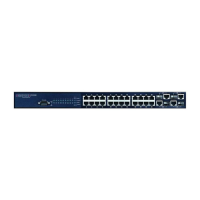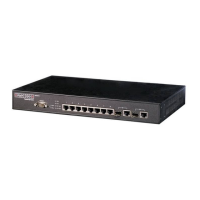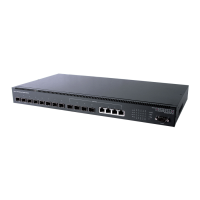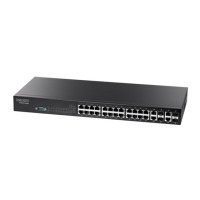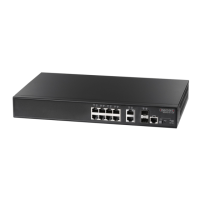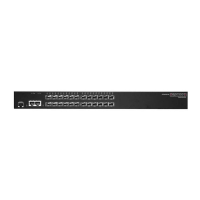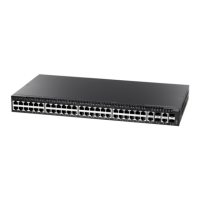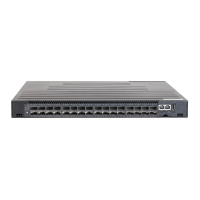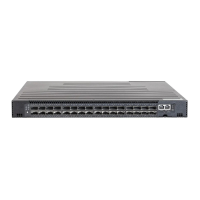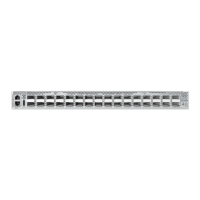C
HAPTER
38
| Quality of Service Commands
– 1190 –
police flow This command defines an enforcer for classified traffic based on the
metered flow rate. Use the no form to remove a policer.
SYNTAX
[no] police flow committed-rate committed-burst
conform-action transmit
violate-action {drop| new-dscp}
committed-rate
- Committed information rate (CIR) in kilobits per
second. (Range: 0-1000000 kbps at a granularity of 64 kbps or
maximum port speed, whichever is lower)
committed-burst
- Committed burst size (BC) in bytes.
(Range: 0-16000000 at a granularity of 4k bytes)
conform-action - Action to take when packet is within the CIR and
BC. (There are enough tokens to service the packet, the packet is
set green).
violate-action - Action to take when packet exceeds the CIR and
BC. (There are not enough tokens to service the packet, the packet
is set red).
transmit - Transmits without taking any action.
drop - Drops packet as required by violate-action.
new-dscp - Differentiated Service Code Point (DSCP) value.
(Range: 0-63)
DEFAULT SETTING
None
COMMAND MODE
Policy Map Class Configuration
COMMAND USAGE
◆ You can configure up to 16 policers (i.e., class maps) for ingress ports.
◆ The
committed-rate
cannot exceed the configured interface speed, and
the
committed-burst
cannot exceed 16 Mbytes.
◆ Policing is based on a token bucket, where bucket depth (i.e., the
maximum burst before the bucket overflows) is by specified the
committed-burst
field, and the average rate tokens are added to the
bucket is by specified by the
committed-rate
option. Note that the
token bucket functions similar to that described in RFC 2697 and RFC
2698.
◆ The behavior of the meter is specified in terms of one token bucket (C),
the rate at which the tokens are incremented (CIR – Committed
Information Rate), and the maximum size of the token bucket (BC –
Committed Burst Size).
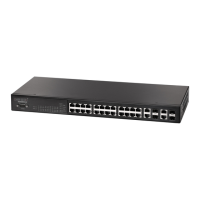
